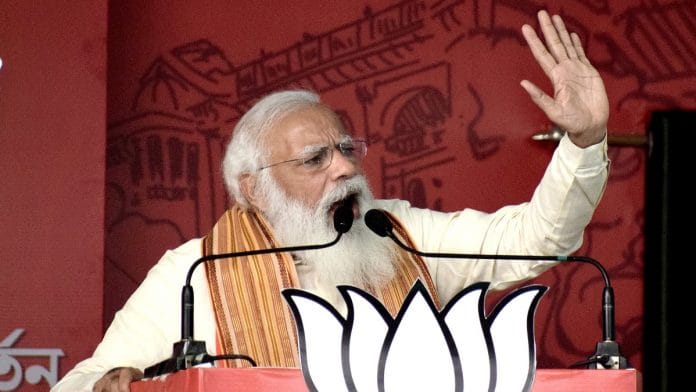As anyone who has tried to invest in India can tell you, India’s states are as distinct from each other as European countries. Every now and then, India’s politicians are reminded of this as well. Prime Minister Narendra Modi certainly was earlier this week, when his all-conquering Bharatiya Janata Party fell short of expectations in state elections.
Of the four large states that had gone to the polls, Modi’s BJP was already in power in Assam and had made major inroads in West Bengal, where it was expecting a win. But the party lost heavily there as well as in the southern states of Tamil Nadu and Kerala — stopped in its tracks by three powerful contenders from regional parties whose politics emphasized their states’ local identities. In Bengal, for example, Chief Minister Mamata Banerjee ran a campaign designed around the slogan “Bengal wants its own daughter,” a not-so-subtle dig at the BJP for its roster of carpetbaggers from north and west India.
Modi remains tremendously popular in most of the country and won re-election emphatically just two years ago. But he and his party know that regional satraps such as Banerjee pose the main threat to their power. The ugly and dispiriting campaign, which featured super-spreader rallies and the mobilization of various federal agencies against the BJP’s rivals, showed just how serious they are about stamping out sub-nationalism.
This tension between Modi and powerful local leaders is reflected in and sharpens conflicts between the central government and opposition-ruled states. In the recent past, for example, they have had major disagreements over tax-sharing. Nor is this simply a question of personalities and clashing egos: The political divisions between the BJP’s heartland and these other states map imprecisely onto cultural and demographic cleavages as well. Tamil Nadu is far richer than the north, Kerala better governed and West Bengal proud of its cultural uniqueness.
Federalism is now the primary axis of Indian politics — and the location of the biggest crises of Indian governance. Nothing illustrates this better than India’s crushing second wave of Covid-19.
The federal government has, over the past few months, tried hard to pass all responsibility to the states for its own failures, which have led to oxygen shortages, a stumbling vaccine rollout and an exponential growth in cases and deaths. As in the U.S. under former President Donald Trump, India’s state leaders have been left largely on their own, provided with no overall strategy and minimal federal support.
Also read: Where is the opposition in Modi’s India? It is here and finally with a face
The Modi government’s failures and evasions have harmed his image as an efficient administrator and the poll results strongly suggest they reduced his party’s appeal as an alternative in Bengal. Nor have some BJP chief ministers, such as the priest-turned-politician Yogi Adityanath in Uttar Pradesh, distinguished themselves in this crisis. The BJP tried to present Adityanath as an exemplar of governance at its rallies; it isn’t surprising that voters refused to allow their states to descend into the kind of anarchy that characterizes UP today.
Meanwhile, a few opposition-led states have differentiated themselves by managing the crisis better. Maharashtra, home of the financial center of Mumbai, had to face the initial force of India’s second wave on its own. But, through relatively skillful administration, it seems to have escaped the tragic chaos that Delhi and UP are currently experiencing.
There’s a lesson here for Modi, if he cares to listen. His personal popularity may keep in him power. But it will never completely overcome India’s federal pressures. Regionalism and sub-nationalism need to be accommodated in India’s politics and its policies, not denied.
For example, New Delhi has refused even to explain how it is allocating vaccines across various states. Given the supply crunch, this is going to lead to tension unless a transparent formula is agreed upon with regional leaders. Already India’s leading vaccine manufacturer is complaining about aggressive calls from various politicians demanding their states get priority.
Federal and state leaders also need to resolve conflicts over the allocation of medical oxygen, pandemic-related borrowing and a myriad of other issues. In a recent interview, Dr. Anthony Fauci pointed out that India needs to “put together a crisis group that would meet and start getting things organized.” Modi and state leaders will have to set aside their disagreements and create a joint mechanism to address these issues.
The way federal spending, expertise and manpower has righted the U.S. pandemic response in the past 100 days is an example of what a federal government that works with states, rather than against them, can do. Modi should realize he can’t simply beat back his regional rivals. Now India needs him to show he can make federalism work for all Indians.-Bloomberg
Also read: Bengal has stopped BJP’s Ashvamedha yagna — and given India an opportunity






